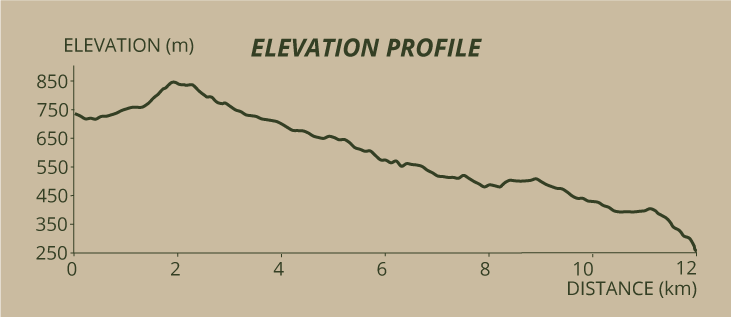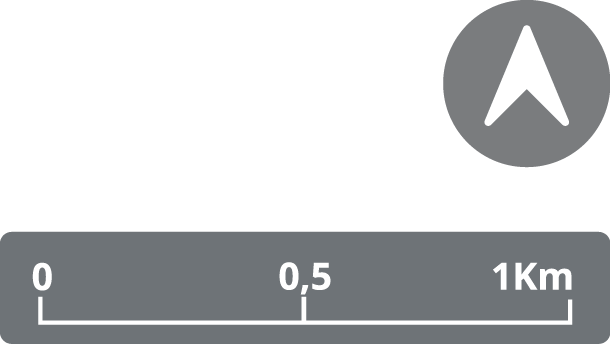This trail begins next to the road, near Mata do Canário, where you will find a spot to park your car.
Follow the asphalt road that is located next to the old stone aqueduct that was used in the 17th and 18th centuries to extract and transport water to the public fountains of the city of Ponta Delgada. It is no longer used. Approximately 300 metres ahead, you will find Muro das Nove Janelas, thus called because of the nine arches that comprise the superior part of the aqueduct. You should then walk 1 kilometre in the pumice pathway, flanked by Cryptomeria japonica trees. Among the lower vegetation, it is possible to find communities of Equisetumm telmateia and some rare exemplars of Platanthera micrantha, an orchid indigenous to the Azores.
At a certain point, you will find a cemented path that ascends steeply. Advance a further 500 metres, until you reach the northern edge of the crater that encircles the blue lagoon.
While going up the path, you can stop, look back and enjoy a panoramic view of the central and eastern parts of São Miguel as well as of the northern and southern seacoasts, simultaneously. At approximately 800 metres of altitude, interesting specimens of the indigenous flora, such as the Erica azorica, Angelica lignescens, Hypericum foliosum and Leontodon filii, appear on the left side of the pathway.
When you find a concrete structure with a sign with “NAV” written on it, you have reached the top of the pathway. This is an Omni-directional Range VHF, a conventional radio navigation system for aeroplanes, a technology that reveals the geo-strategic importance of these islands in Atlantic air crossings. From this point forward the cemented path ends and is replaced by a dirt road. A few metres further ahead, on your left, you will see a geodesic marker of the 850 metres of the altitude of Pico da Cruz, the highest part of the trail. From this elevated point, you can enjoy an astonishing view of Caldeira das Sete Cidades, with the Atlantic Ocean in the background.
Return to the main road and continue descending. There is a crossing 200 metres further ahead. Remain on the left.
Go around the edge of the crater, always keeping the Blue Lagoon to your left. Approximately 4.5 km later you will reach a crossing with a belvedere. The existence of some concrete tables and seats indicate that this is the ideal place to rest and replenish the body. The view is impressive! We can see Lagoa Verde, Lagoa Azul and the picturesque village of Sete Cidades. Surrounded by forests of Cryptomeria japonica, we can see geological structures that resulted from secondary intra-caldera eruptions. On your right, you will see Caldeira Seca and Caldeira do Alferes and, on your left, the craters or cones containing the lagoons of Santiago and Rasa.
Continue walking along the dirt road in the same direction. Approximately 3.5 km ahead, you will find the intersection of this trail with trail PR3 SMI, Vista do Rei - Sete Cidades. Take a left at Arrebentões shortcut and head toward the village.
Take a left on the shortcut known as Arrebentões, heading towards the village, passing by a small water tank, used to quench the thirst of the cattle that abounds here. A part of this trail is steep. We recommend caution whilst descending.
The trail leads to the margin of Lagoa Azul (Blue Lagoon). Follow the pathway that surrounds the margin of the lagoon until you find the Store of the Park of Lagoa das Sete Cidades. We recommend that you visit an area dedicated to the geological/biological interpretation and promotion of the Natural Park of São Miguel. After this visit, turn right on the next street and walk straight ahead, turning right again on Rua de Baixo street. Walk the last few metres to the centre of the village, where you will find an 18th-century church, the church of Saint Nicholas. The trail ends here.







